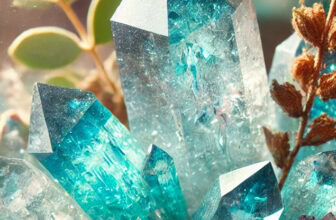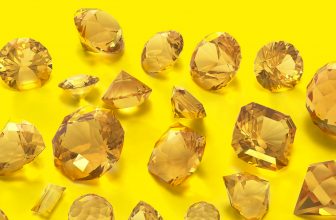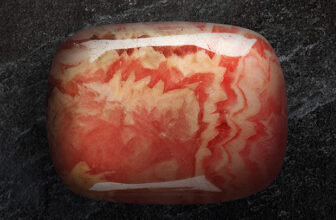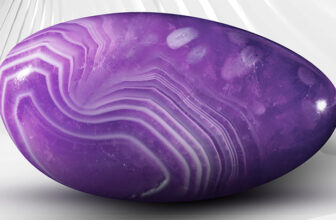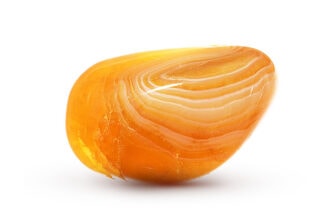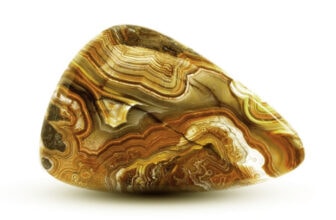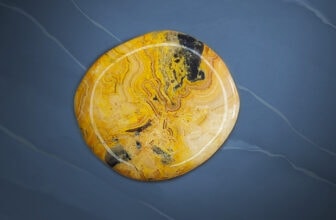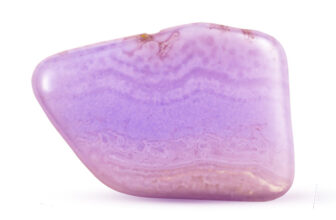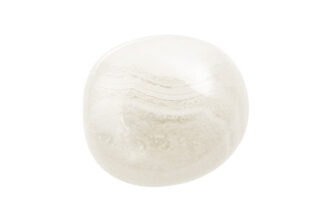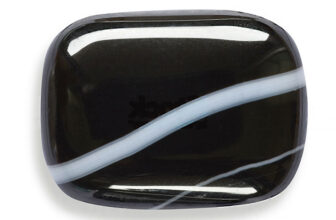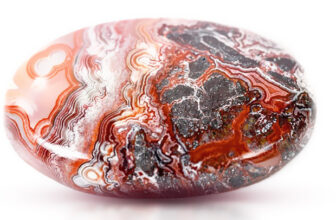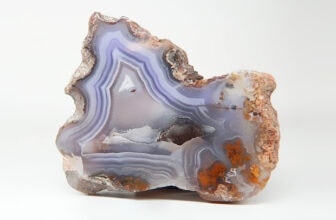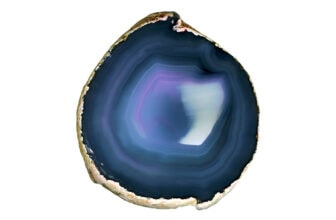Crystal Cubes
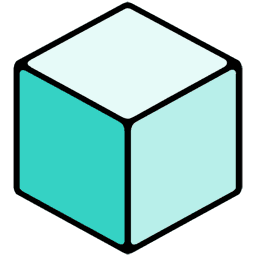 The Power of Perfect Form
The Power of Perfect Form
Have you ever felt like life is spinning a bit too fast – like your mind is a carousel of thoughts that won’t slow down? That’s exactly when the humble crystal cube becomes more than a beautiful object. It becomes a symbol of balance in motion.
A crystal cube is a gemstone meticulously carved into a perfect six-sided shape, each face equal, each angle precise – 90° of quiet order. There’s something deeply reassuring about its symmetry. It doesn’t just look balanced; it feels balanced. The cube embodies structure, harmony, and the reassuring solidity of the physical world.
In crystal energy work, cubes are anchors. They ground scattered thoughts, absorb chaos, and steady emotional turbulence. Their energy is direct, unpretentious, and profoundly stabilizing. Whether placed on a work desk or held during meditation, a cube whispers a reminder: You are safe. You are here. You are steady.
Symbolically, the cube represents the foundation of all material existence – it’s the sacred geometry of Earth itself. Each side resonates with equilibrium, integrity, and the physical plane of reality. This is why the cube aligns naturally with the Root Chakra, the energetic center of security and belonging.
Many practitioners use crystal cubes in meditation, manifestation rituals, and energy balancing layouts. Their flat surfaces and equal dimensions make them ideal for placing intentions, amplifying focus, and structuring the flow of energy in a space. They transform scattered potential into tangible presence.
How the Cube Shapes Energy and Emotion
Why does a cube’s geometry feel so different from, say, a sphere or a point? The answer lies in sacred geometry, where form itself carries frequency.
The cube is one of the five Platonic Solids – a shape so symmetrical that it’s considered a building block of the physical universe. In ancient philosophy, it represented Earth: the dense, dependable, and structured element that supports all life. Each face of a cube mirrors the others, creating an energetic resonance of equality and coherence. Nothing is hidden, nothing exaggerated – just pure, grounded stillness.
When used intentionally, crystal cubes act as energetic stabilizers. Imagine them as the “weights” that keep your spiritual hot-air balloon from drifting away. They draw energy downward – from the head to the feet, from abstract to concrete – helping you center, focus, and reconnect to the body’s natural rhythms.
This anchoring quality is why cubes are especially valued for stress relief. During emotional storms, their geometry invites the nervous system to reorganize – to align, balance, and breathe again. The cube doesn’t rush; it holds. Its energy says, Take your time. Find your footing.
Spiritually, the cube serves as a metaphor for manifestation: the transformation of vision into form. Just as its perfect edges define space, it teaches that boundaries create stability – and that spiritual expansion must be built on a grounded foundation.
The Cube Through Time
Why has the cube fascinated humans for millennia? Perhaps because it reflects something we crave – order amid mystery. Long before it appeared on altars or meditation tables, the cube was a symbol woven into our understanding of the universe itself.
In ancient Greek philosophy, the cube represented the element of Earth. Plato and his students saw it as one of the five Platonic solids – geometric archetypes believed to be the building blocks of creation. The cube’s stability, its perfect symmetry, echoed the grounded, unshakable nature of the physical world. For them, the cube wasn’t merely a shape; it was a truth written in form.
Travel east, and you find similar reverence. In Vedic traditions, geometry was a language of spirit. The cube’s structure was thought to mirror the sacred order of nature – steady, nurturing, dependable. Temples, shrines, and altars across ancient civilizations often echoed cubic proportions, embodying the principle that the material and divine can meet through structure.
The alchemists of the Middle Ages took this symbolism even further. For them, the cube signified the prima materia – the base substance of existence from which transformation begins. It represented the human body as the vessel of experience, the place where the soul’s growth unfolds.
And in sacred architecture – from the Kaaba in Mecca, to the cubic inner sanctums of Egyptian temples – the cube stood as a symbol of permanence and spiritual foundation. To step within a cubic space was to step into divine order, to be held by geometry that mirrored the cosmos.
The Art and Precision of Crystal Cubes
How does raw, unpredictable stone become a flawless cube of light and symmetry? The transformation is both scientific and almost meditative.
It begins with a rough crystal – perhaps Clear Quartz, Black Tourmaline, or Fluorite. Each piece is examined for internal clarity, orientation, and natural fractures. A skilled lapidary artist studies the crystal’s structure before making a single cut. The goal isn’t just to force it into shape but to collaborate with the stone’s natural grain. The artisan must align with the crystal’s inner geometry – its hidden map of light.
Using precision tools, the craftsman slices the crystal into planes, gradually refining each face until six equal sides emerge. Every edge must meet its neighbor at a perfect right angle. This meticulous work takes patience; one wrong movement can shatter hours of progress.
The cube is then polished to awaken its inner glow. Some artisans prefer a glass-like finish – smooth, reflective, and modern. Others leave a matte or slightly rough texture, honoring the stone’s natural feel. Both approaches hold energy differently: the polished cube radiates clarity and focus, while the raw one hums with grounded, organic vitality.
Though the cube is a carved form, it doesn’t distort the crystal’s natural vibration. Instead, it organizes it – giving the energy a clear direction and purpose. Think of it as tuning a chaotic frequency into a single, steady note.
Common cube materials like Pyrite shimmer with confidence and abundance; Smoky Quartz soothes anxiety with its soft, earthen warmth; Labradorite turns inner transformation into calm strength. Each type carries its own personality, but the cubic shape refines and grounds it, amplifying stability no matter the mineral.
A World of Shapes and Stones
What kind of energy do you want to invite into your space – clarity, protection, abundance, or calm? The answer often determines which crystal cube feels right in your hand. Though their shape remains constant, each type of stone brings its own unique voice to the harmony of the cube.
Let’s start with the classics. Clear Quartz cubes are like energetic amplifiers – pure, bright, and endlessly versatile. They magnify intention and cleanse stagnant energy, making them perfect for meditation or manifestation work. If your mind feels foggy, this cube acts like sunlight breaking through clouds.
Then there’s Black Tourmaline, the quiet guardian. Its cube form is grounding, deeply protective, and emotionally steadying. Place it on your desk or by your front door, and it feels like locking the chaotic world outside for a moment of calm inside.
Pyrite cubes shimmer like golden confidence. They vibrate with success, courage, and mental stamina – perfect companions for anyone working toward tangible goals. You’ll often find them in offices or creative studios, where their geometric gleam reminds you that structure is a bridge to success.
If you crave focus and order, Fluorite cubes are the ultimate allies. Their translucent layers reflect organization and flow. They help tidy the mind, bringing peace to cluttered thoughts or busy environments.
For emotional release, Smoky Quartz brings grounding energy that feels like a deep exhale. Its cube is comforting and stabilizing – a quiet reminder that it’s okay to let go.
And then there’s Labradorite, the cube of mystery and transformation. Its shifting colors symbolize change within structure – intuition guided by stability. It’s ideal for those walking a path of growth but seeking a firm, grounded base beneath their evolution.
Crystal cubes also vary by purpose. Some are polished smooth for meditation, others rough and textured for earthy authenticity. In energy grids, cubes act as anchors, securing the flow of intention. On a bookshelf or altar, they quietly balance the energy of a room – subtle architects of equilibrium.
Each cube, regardless of material or finish, shares one universal trait: it brings the energy of structure to whatever it touches. It’s the difference between scattered potential and centered strength – the moment chaos finds its rhythm.
Grounding, Healing, and Manifestation
What happens when you hold a crystal cube during a stressful day? Something shifts – not in an explosive way, but gently, almost imperceptibly. The mind slows. The breath deepens. The heart steadies.
That’s the essence of a cube’s metaphysical power. It’s not about high drama or dazzling light shows; it’s about anchoring. Crystal cubes pull energy downward, rooting your spirit in the body and the present moment. For anyone who overthinks or lives mostly in their head, this grounding effect is transformative. It’s the geometry of calm.
In metaphysical terms, the cube aligns with the Root Chakra, the energy center of safety, stability, and trust. When this chakra is balanced, life feels less like a storm and more like a steady tide. You move with purpose, not panic.
Cubes are also powerful tools for manifestation. Their symmetry symbolizes the structured transformation of dreams into matter. Placing one near your workspace or vision board can help you turn inspiration into action – a reminder that imagination finds strength through structure.
Their energy can also serve as protection. When positioned in the corners of a room, cubes create a quiet, invisible grid that seals in harmony and filters out discord. The cube’s natural geometry reinforces boundaries – emotional, mental, and energetic.
And let’s not forget their healing potential. During energy work, a cube beneath the feet or near the base of the spine promotes grounding, helping release excess energy. It teaches that stability isn’t stagnation; it’s the foundation for growth.
Ultimately, crystal cubes embody the union of spirit and matter. They remind us that spirituality doesn’t always mean ascending – sometimes, it means rooting. They hold us steady while we rebuild, refocus, and remember that the most profound strength often lies in stillness.
From Meditation to Modern Spaces
What if grounding could be as simple as placing a small stone where your eyes can rest on it? Crystal cubes invite you to weave calm into daily life – not as a ritual reserved for quiet moments, but as a subtle rhythm within your surroundings.
Start with meditation. Hold a cube in each hand or rest one near the base of your spine. Feel its solid weight and the way it draws your attention down into the body. The symmetry encourages balance between inhale and exhale, between mind and matter. It’s like having a physical reminder that peace doesn’t float somewhere above you – it grows from the ground beneath you.
In crystal grids, cubes play a foundational role. Their geometry stabilizes the layout, acting as anchors that hold intention in place. Use them at the center or corners of your grid to amplify focus and prevent energetic “drift.” If a grid were a house of energy, the cubes would be its pillars – steady, silent, essential.
At home or work, their influence can be equally profound. Place a Fluorite or Smoky Quartz cube on your desk to organize thoughts and ward off overstimulation. Or tuck a Black Tourmaline cube in the corner of a room to create a shield of grounded energy. Their presence subtly shifts the atmosphere – less buzz, more breath.
Energy healers often use cubes during bodywork or chakra alignment. A cube beneath the feet helps clients ground excess energy after intense sessions. Others place cubes at the corners of massage tables to create a field of stability, helping both healer and receiver stay centered.
Even in Feng Shui, the cube finds its home. Its geometry corresponds to the Earth element, which governs nourishment, security, and abundance. Positioning crystal cubes in the southwest or northeast areas of a space can strengthen these aspects – encouraging relationships that feel steady and goals that grow with patience.
You don’t need a grand ritual to benefit. Sometimes, just holding a cube for a few breaths after a long day is enough. It’s a small, silent act of recalibration – one that says, you’ve done enough for now, stay grounded.
Seeing the Real from the Replica
With the rising popularity of crystal decor, imitation pieces have become common – and it’s easy to be swept up by the shine. So how do you tell whether your cube is the real deal?
Start with texture and temperature. Genuine crystals feel cool to the touch and retain their chill even after being held for a moment. Synthetic or glass cubes often warm quickly and feel unnaturally smooth. Run your fingers along the surface; natural minerals may have tiny imperfections or inclusions, subtle signs of their geological origin.
Weight can also tell a story. Real stones are dense and substantial, while resin or glass imitations tend to feel lighter. Pick it up – a true crystal cube has presence, a quiet gravity that synthetic materials can’t quite mimic.
Visual depth is another clue. Look into the cube under natural light. Authentic crystals reveal internal layers, streaks, or soft cloudiness – the marks of time and pressure. Counterfeits, on the other hand, often appear too perfect, too uniform.
When purchasing, trust reputable sources. Ask about origin, mineral composition, and craftsmanship. Skilled lapidaries are proud of their process and can tell you how the crystal was sourced and shaped. Transparency is a good sign; hesitation or vague answers are not.
Quality craftsmanship also matters. The most exquisite cubes have clean, even edges, balanced proportions, and a finish that complements the stone’s energy rather than overpowering it. A well-cut cube doesn’t just look beautiful – it feels harmonious.

